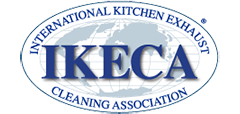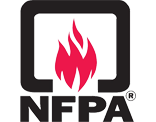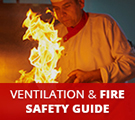Cooking Fires Are the Most Common Type of Commercial Fire – Learn How We Can Help Keep Your Kitchen Safer
Cooking is the primary cause of all nonresidential structure fires and the primary cause of restaurant fires specifically, according to the most recent statistics from the National Fire Incident Reporting System. Every year, commercial kitchen fires injure about 75 people and inflict over $172 million in property damage.

Thankfully, 91 percent of kitchen fires are minor, contained incidents that do not significantly harm the restaurant structure. This is mostly due to the fact that the majority of restaurant owners put a lot of effort into lowering their risk of fire and making sure that any fires that do start in the kitchen are quickly put out. The experts in kitchen air control and fire suppression at Flue Steam can help you lower the risk of fire in your commercial kitchen by doing the following three things.
Hoods Are Needed for Every Cooking Appliance
Grease fires in the kitchen are frequently found to be the origin of non-confined restaurant building fires. Even pinpointing the precise appliance is possible occasionally. According to the data, deep fryers account for 9% of these non-confined fires, ranges for 7%, and other cooking equipment for 5%. Make sure your kitchen appliances have exhaust hoods that can efficiently vent all grease-related fumes away from the appliance and outside the structure.
Clean Your Kitchen Exhaust System
Even with properly sized and positioned exhaust hoods, some greasy buildup is inevitably going to stick to kitchen surfaces, particularly the interior of the kitchen exhaust system and the underside of the hood. With a combination of hand scraping and steam cleaning methods, the experts at Flue Steam can assist you in maintaining these grease deposits within the ranges deemed safe by regional fire rules.
Keep Your Automatic Fire Suppression System in Working Order
An automatic fire suppression system is a crucial component of commercial kitchen fire prevention. This system can put out fires that start on the cooktop or in the exhaust hood before they spread to the ductwork when it’s working properly.
Regular inspections of your automated fire suppression system are essential, especially following a discharge. In addition to the automatic system, kitchen staff should have access to portable fire extinguishers that are maintained nearby. Both portable fire extinguishers and automatic fire suppression systems are offered and/or serviced by Flue Steam. Call us at 800-700-FLUE for immediate help.





